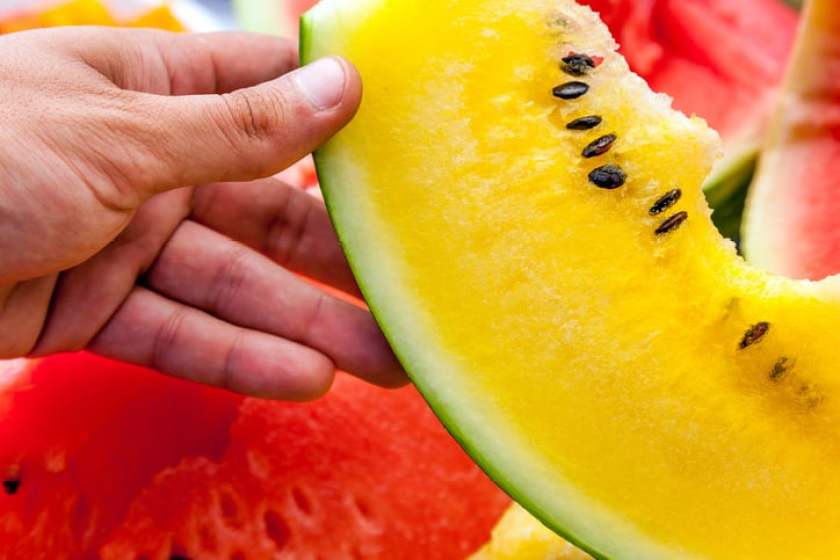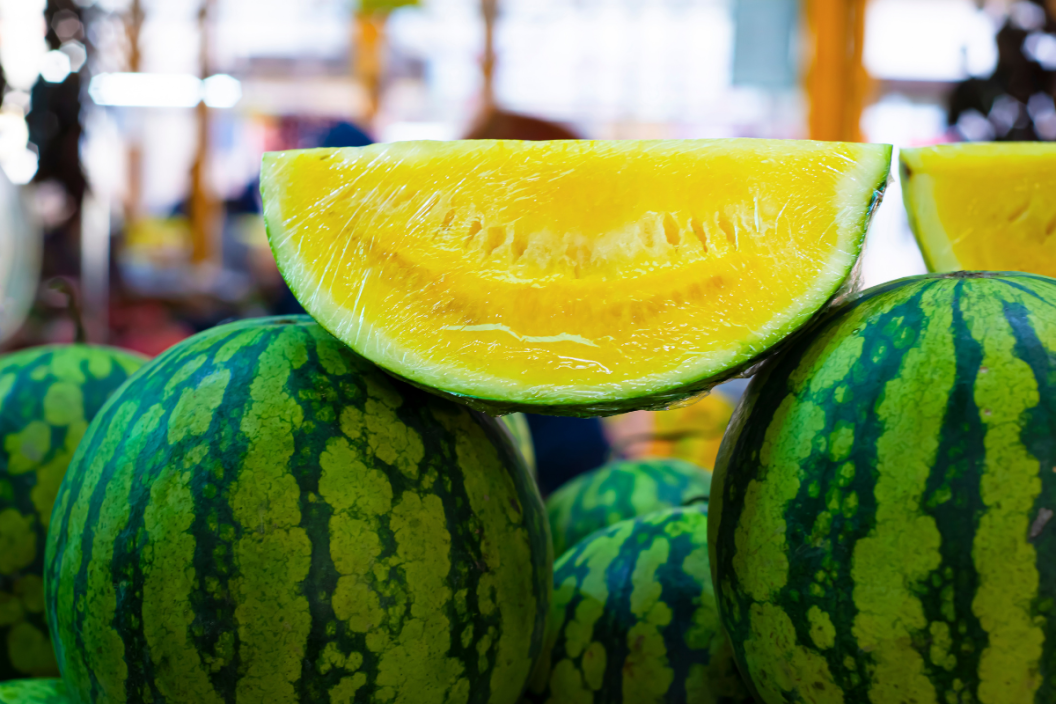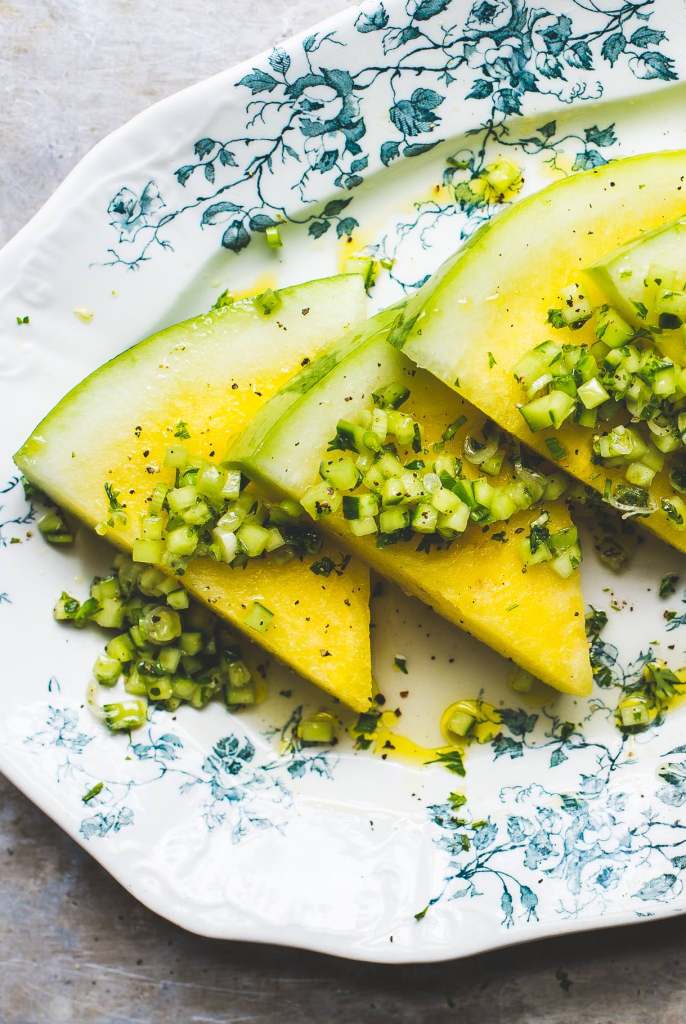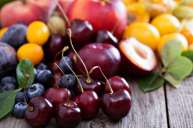Although summertime is the perfect season for sweet, crisp watermelon, this juicy fruit is enjoyable all year round. There are few things sweeter than biting into watermelon wedges on the beach, in the backyard, or even on road trips. While you might know a few basic watermelon tricks, like sticking popsicle sticks in the wedge rinds or salting it to bring out the sweetness, you might not know everything about watermelon. Did you know that there are different types of watermelons, like yellow watermelon? And not only does it exist, but it's also delicious.
So what's the difference between yellow flesh watermelon and your garden variety regular red watermelons? Traditional watermelons get the pinkish-red flesh from lycopene, a powerful antioxidant and the stuff that makes tomatoes red — and what scientists modified to create these pink pineapples. The crimson sweet red color watermelons are a product of careful cross-breeding, how funny is that?
Yellow Watermelons Lack Lycopene
Watermelon varieties that don't contain lycopene will often have yellow fruit. These bright yellow melons lack lycopene, however they have powerful amounts of beta-carotene with health benefits that include promoting eye health. They also good sources of potassium, antioxidants, vitamin A, and immune system-boosting vitamin C. You are more likely to find these heirloom yellow varieties in Farmer's Markets than traditional grocery stores.

Getty Images/Mordolff
On the outside, yellow watermelons look just like red varieties of watermelon, with a green rind. They can be seedless watermelons, with countless seedless varieties. With yellow watermelons, though, it's what's on the inside that counts.
Aside from the obvious color difference, yellow watermelons have a higher sugar content and tend to be sweeter than the red ones, described with notes of honey and apricot.
The sweet taste makes it especially perfect for soaking in booze, like tequila or rum for a tasty, saucy treat. While it's not an extremely sweet taste, it cuts through the edge of spirits nicely. They're also tasty in fruit salads alongside other summertime fruit like cantaloupe and berries. Yellow watermelons are available seeded and seedless, and the seedless varieties have a crisper texture.
Yellow watermelons are available year-round from specialty produce suppliers — and maybe some select grocery stores — with a peak season in the summer months.
Yellow Flesh Black Diamond Watermelon, Desert King, Yellow Crimson, Yellow Doll, Buttercup and Tastigold are just a few of the varieties of yellow watermelon for sale and cultivation.
While many people think it's the other way around, there's a good amount of evidence indicating the yellow and white varieties of watermelons actually predate the pink and red melons we are familiar with today.
If you're ready to give this watermelon a go, you can pick up yellow watermelon seeds online or at your local plant store. Some of the most popular ones to grow are Buttercup, Cream of Saskatchewan, Gold in Gold, Mountain Sweet Yellow, and Lemon Krush. Watermelons are annuals, so you'll need to replant them every year. They're essentially the same as growing the red varieties! Rural Living has more information for how to successfully grow them. If you want to stick to traditional reddish tint watermelons, we don't blame you, but branching out won't hurt.
Yellow Watermelon Salad with Pickled Ginger Cucumber Relish
The relish is the real star of this dish, though the colors alone just scream barbecue appetizer. Parsley especially brings out the fresh, sweet taste of the watermelon.
Feel free to add a smidge of dill in the recipe, it pairs with the cucumber beautifully. Find the recipe at Heartbeet Kitchen.





